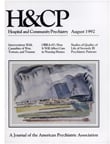Classification of Amok in DSM-IV
Abstract
Culture-bound syndromes have been described worldwide in many individuals and, for certain syndromes, in epidemic proportion, yet these disorders have been classified as rare and exotic conditions warranting minimal attention. Development of the fourth edition of the Diagnostic and Statistical Manual of Mental Disorders and the tenth edition of the international Classification of Diseases offers an opportunity for providing a more sophisticated classification of these phenomena. The authors examine amok, a syndrome first described in Malaysia that consists of homicidal frenzy preceded by a state of brooding and ending with somnolence and amnesia. They discuss the concept of and criteria for a culture-specific disorder and propose that amok be classified as a culture-specific explosive behavioral disorder in DSM-IV.
Access content
To read the fulltext, please use one of the options below to sign in or purchase access.- Personal login
- Institutional Login
- Sign in via OpenAthens
- Register for access
-
Please login/register if you wish to pair your device and check access availability.
Not a subscriber?
PsychiatryOnline subscription options offer access to the DSM-5 library, books, journals, CME, and patient resources. This all-in-one virtual library provides psychiatrists and mental health professionals with key resources for diagnosis, treatment, research, and professional development.
Need more help? PsychiatryOnline Customer Service may be reached by emailing [email protected] or by calling 800-368-5777 (in the U.S.) or 703-907-7322 (outside the U.S.).



